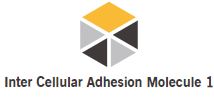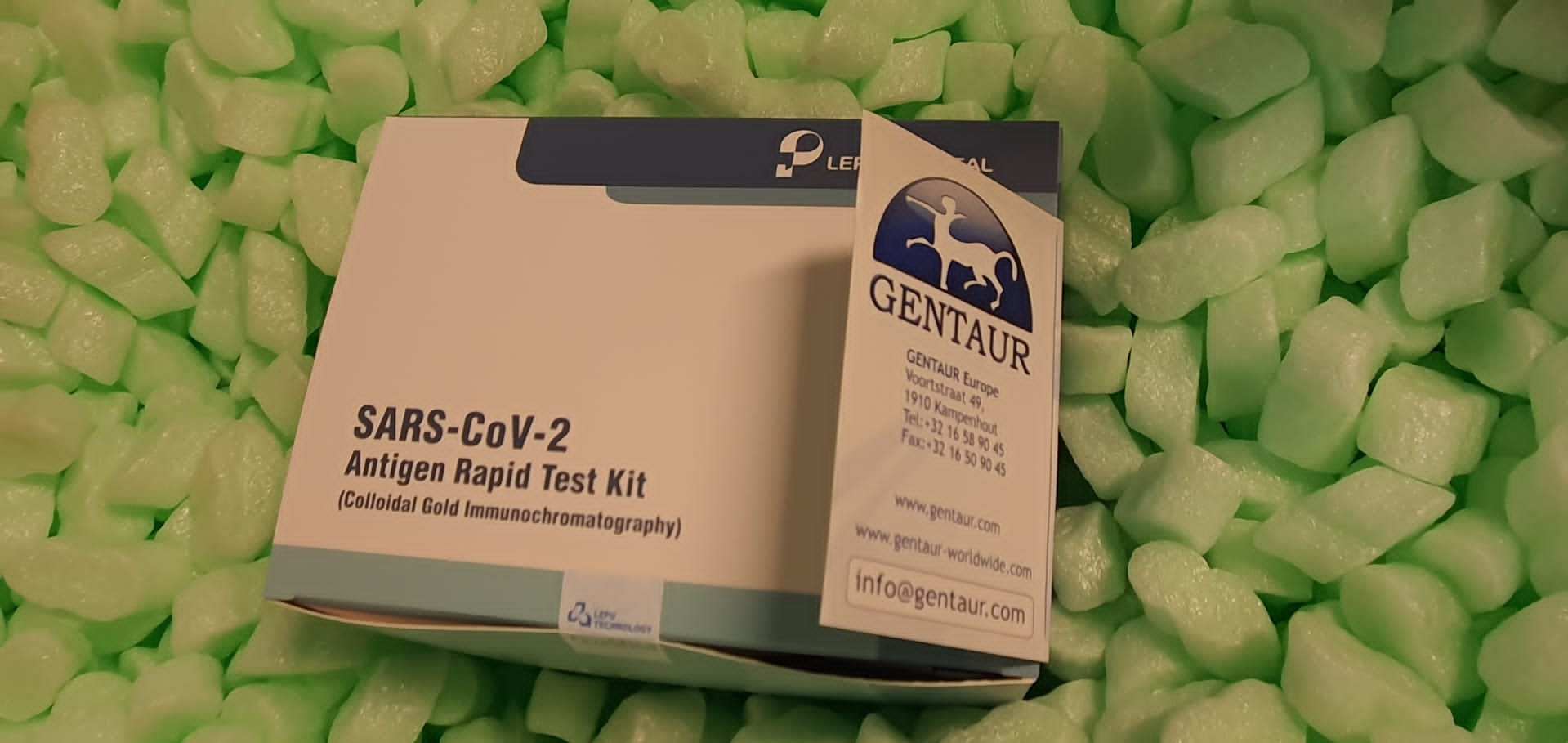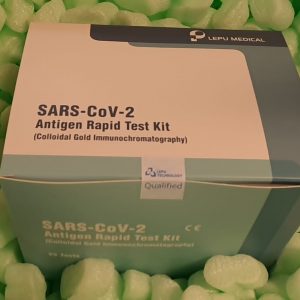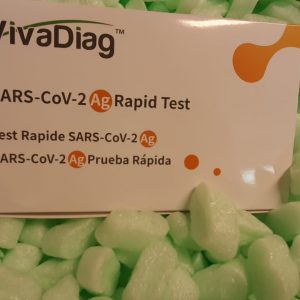Cells work together with their microenvironment by continuously sensing mechanical and chemical cues changing them into biochemical indicators. These processes permit cells to reply and adapt to modifications of their surroundings, and are essential for many mobile features. Understanding the mechanism underlying this advanced interaction on the cell-matrix interface is of elementary worth to decipher key biochemical and mechanical components regulating cell destiny. The mix of fabric science and floor chemistry aided within the creation of controllable environments to review cell mechanosensing and mechanotransduction.
Biologically impressed supplies tailor-made with particular bioactive molecules, desired bodily properties and tunable topography have emerged as appropriate instruments to review cell habits. Amongst these supplies, artificial cell interfaces with built-in sensing capabilities are extremely advantageous to measure biophysical and biochemical interplay between cells and their surroundings. On this overview, we focus on the design of micro and nanostructured biomaterials engineered not solely to imitate the construction, properties, and performance of the mobile microenvironment, but additionally to acquire quantitative info on how cells sense and probe particular adhesive cues from the extracellular area.
This kind of responsive biointerfaces gives a readout of mechanics, biochemistry, and electrical exercise in actual time permitting commentary of mobile processes with molecular specificity. Particularly designed sensors primarily based on superior optical and electrochemical readout are mentioned. We additional present an perception into the rising function of multifunctional micro and nanosensors to regulate and monitor cell features via materials design. This exercise seems to contain direct inhibition by EpCAM of members of the novel PKC household and of a selected downstream PKD-Erk cascade.
We try right here to carry collectively the out there experimental knowledge to construct a world coherent view of EpCAM features. We additionally embody on this overview EpCAM2/Trop2, the shut relative of EpCAM. On the core of EpCAM (and EpCAM2/Trop2) operate stands the flexibility to repress contractility of the actomyosin cell cortex. We are going to focus on how this exercise may end up in quite a lot of adhesive and migratory phenotypes, thus probably explaining at the very least a part of the obvious inconsistencies between totally different research. The image stays fragmented, and we’ll spotlight a few of the conflicting proof and the various unsolved points, beginning with the controversy round its authentic description as a cell-cell adhesion molecule.
Fluorescence Correlation Spectroscopy Reveals Interplay of Some Microdomain-Related Lipids with Mobile Focal Adhesion Websites
Cells adhere to the extracellular matrix at distinct anchoring factors, principally focal adhesions. These are wealthy in motionless transmembrane- and cytoskeletal-associated proteins, a few of that are recognized to work together with lipids of the plasma membrane. To research their impact on lipid mobility and molecular interactions, fluorescently labeled lipids had been included into the plasma membranes of major myofibroblasts utilizing fusogenic liposomes.
With fluorescence correlation spectroscopy, we examined mobilities of labeled microdomain-associated lipids comparable to sphingomyelin (SM), ganglioside (GM1), and ldl cholesterol in addition to of a microdomain-excluded phospholipid (PC) and a lipid-like molecule (DiIC18(7)) in focal adhesions (FAs) and in neighboring non-adherent membrane areas. We discovered considerably slower diffusion of SM and GM1 inside FAs however no impact on ldl cholesterol, PC, and DiIC18(7). These knowledge had been in comparison with the molecular habits in Lo/Ld-phase separated large unilamellar vesicles, which served as a mannequin system for microdomain containing lipid membranes.
In distinction to the mannequin system, lipid mobility modifications in FAs had been molecularly selective, and no particle enrichment occurred. Our findings recommend that lipid habits in FAs can’t be described by Lo/Ld-phase separation. The noticed slow-down of some molecules in FAs is probably resulting from transient binding between lipids and a few molecular constituent(s). In conclusion WE43-T5 indicated bone/implant interplay properties that makes it extra appropriate for fabrication of endosteal bone screws.
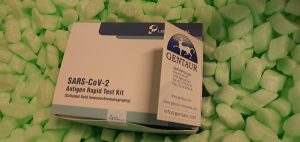
WE43 and WE43-T5 Mg alloys screws examined in-vitro mobile adhesion and differentiation assay and in-vivo histomorphologic evaluation in an ovine mannequin
WE43 Mg alloy proved to be a perfect candidate for manufacturing of resorbable implants in each scientific and trial settings. In earlier research we examined biocompatibility and degradation properties of WE43 (as-cast) and artificially aged (WE43-T5) Mg alloys in a sheep mannequin. Each alloys confirmed glorious biocompatibility with the as-cast, WE43, kind displaying elevated degradability in comparison with the artificially aged, WE43-T5. Within the current examine, our group assessed the organic habits and degradation sample of the identical alloys when implanted as endosteal implants in a sheep mannequin.
 Antibody) Anti-Mouse Junctional adhesion molecule B (JAM-B) Antibody |
|
103-M258 |
ReliaTech |
100 µg |
EUR 399 |
|
Description: Members of the junctional adhesion molecule (JAM) family are type I transmembrane glycoproteins of the immunoglobulin (Ig) superfamily that are localized in the tight junctions between endothelial or epithelial cells and appear to be involved in leukocyte transmigration. JAM-A, also known as platelet adhesion molecule 1 (PAM-1) and platelet F11 receptor, contains two V-type Ig-like domains, forms homodimers, and interacts with LFA-1. JAM-B (vasculoendothelial or VE-JAM) and JAM-C each contain two Ig domains (one V-type and one C2-type), a cytoplasmic PDZ-binding motif and a PKC phosphorylation site. JAM-C interacts with MAC-1 and facilitates JAM-B interaction with integrin alpha 4 beta 1. |
) Junctional adhesion molecule B Antibody (FITC) |
|
20-abx107021 |
Abbexa |
-
Ask for price
-
Ask for price
-
Ask for price
-
Ask for price
-
Ask for price
|
- 100 ug
- 1 mg
- 200 ug
- 20 ug
- 50 ug
|
|
|
) Junctional adhesion molecule B Antibody (FITC) |
|
abx107021-100g |
Abbexa |
100 µg |
EUR 362.5 |
) Junctional adhesion molecule B Antibody (FITC) |
|
abx107021-20g |
Abbexa |
20 µg |
EUR 162.5 |
) Junctional adhesion molecule B Antibody (FITC) |
|
abx107021-50g |
Abbexa |
50 µg |
EUR 250 |
) Human Junctional adhesion molecule B (JAM2) |
|
1-CSB-YP011936HU |
Cusabio |
-
Ask for price
-
Ask for price
-
Ask for price
-
Ask for price
-
Ask for price
-
Ask for price
|
- 100ug
- 10ug
- 1MG
- 200ug
- 500ug
- 50ug
|
|
|
|
Description: Recombinant Human Junctional adhesion molecule B(JAM2),partial expressed in Yeast |
) Human Junctional adhesion molecule B (JAM2) |
|
1-CSB-EP011936HU |
Cusabio |
-
Ask for price
-
Ask for price
-
Ask for price
-
Ask for price
-
Ask for price
-
Ask for price
|
- 100ug
- 10ug
- 1MG
- 200ug
- 500ug
- 50ug
|
|
|
|
Description: Recombinant Human Junctional adhesion molecule B(JAM2),partial expressed in E.coli |
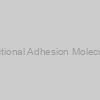 Junctional Adhesion Molecule 1 |
|
E8ET1610-90 |
EnoGene |
100ul |
EUR 275 |
|
Description: Available in various conjugation types. |
) Junctional adhesion molecule B Antibody (Biotin) |
|
20-abx105603 |
Abbexa |
-
Ask for price
-
Ask for price
-
Ask for price
-
Ask for price
-
Ask for price
|
- 100 ug
- 1 mg
- 200 ug
- 20 ug
- 50 ug
|
|
|
) Junctional adhesion molecule B Antibody (Biotin) |
|
abx105603-100g |
Abbexa |
100 µg |
EUR 362.5 |
) Junctional adhesion molecule B Antibody (Biotin) |
|
abx105603-20g |
Abbexa |
20 µg |
EUR 162.5 |
) Junctional adhesion molecule B Antibody (Biotin) |
|
abx105603-50g |
Abbexa |
50 µg |
EUR 250 |
 Mouse Junctional Adhesion Molecule C ELISA Kit |
|
IMSJAM3KT |
Innovative research |
each |
EUR 702 |
|
|
|
Description: Mouse Junctional Adhesion Molecule C ELISA Kit |
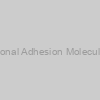 Mouse Junctional Adhesion Molecule A ELISA Kit |
|
IMSJAMAKT |
Innovative research |
each |
EUR 702 |
|
|
|
Description: Mouse Junctional Adhesion Molecule A ELISA Kit |
 Antibody) Anti-Human Junctional adhesion molecule B (JAM-B) Antibody |
|
101-M525 |
ReliaTech |
100 µg |
EUR 399 |
|
Description: Members of the junctional adhesion molecule (JAM) family are type I transmembrane glycoproteins of the immunoglobulin (Ig) superfamily that are localized in the tight junctions between endothelial or epithelial cells and appear to be involved in leukocyte transmigration. JAM-A, also known as platelet adhesion molecule 1 (PAM-1) and platelet F11 receptor, contains two V-type Ig-like domains, forms homodimers, and interacts with LFA-1. JAM-B (vasculo-endothelial or VE-JAM) and JAM-C each contain two Ig domains (one V-type and one C2-type), a cytoplasmic PDZ-binding motif and a PKC phosphorylation site. JAM-C interacts with MAC-1 and facilitates JAM-B interaction with integrin alpha 4 beta 1. |
 Protein) Mouse Junctional Adhesion Molecule 3 (JAM3) Protein |
|
20-abx168383 |
Abbexa |
-
Ask for price
-
Ask for price
-
Ask for price
-
Ask for price
-
Ask for price
|
- 100 ug
- 10 ug
- 1 mg
- 200 ug
- 50 ug
|
|
|
 Protein) Mouse Junctional Adhesion Molecule 3 (JAM3) Protein |
|
abx168383-1ml |
Abbexa |
1 ml |
EUR 225 |
 Protein) Mouse Junctional Adhesion Molecule 3 (JAM3) Protein |
|
abx692077-100g |
Abbexa |
100 µg |
EUR 837.5 |
 Protein) Mouse Junctional Adhesion Molecule 3 (JAM3) Protein |
|
abx692077-1mg |
Abbexa |
1 mg |
Ask for price |
 Protein) Mouse Junctional Adhesion Molecule 2 (JAM2) Protein |
|
abx692079-100g |
Abbexa |
100 µg |
EUR 837.5 |
 Protein) Mouse Junctional Adhesion Molecule 2 (JAM2) Protein |
|
abx692079-1mg |
Abbexa |
1 mg |
Ask for price |
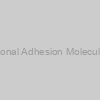 Human Junctional Adhesion Molecule B ELISA Kit |
|
IHUJAMBKT |
Innovative research |
each |
EUR 702 |
|
|
|
Description: Human Junctional Adhesion Molecule B ELISA Kit |
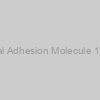 Junctional Adhesion Molecule 1 Antibody |
|
49009 |
SAB |
100ul |
EUR 499 |
 Junctional Adhesion Molecule 1 Antibody |
|
49009-100ul |
SAB |
100ul |
EUR 399.6 |
 Junctional Adhesion Molecule 1 Antibody |
|
49009-50ul |
SAB |
50ul |
EUR 286.8 |
 Mouse Junctional adhesion molecule-like ELISA kit |
|
E01A22974 |
BlueGene |
96T |
EUR 700 |
|
Description: ELISA |
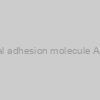 Mouse Junctional adhesion molecule A, F11r ELISA KIT |
|
ELI-37892m |
Lifescience Market |
96 Tests |
EUR 1038 |
 Elisa kit) Mouse Junctional adhesion molecule A(F11R) Elisa kit |
|
EK730788 |
AFG Bioscience LLC |
96 Wells |
EUR 0.72 |
 Elisa kit) Mouse Junctional adhesion molecule C(JAM3) Elisa kit |
|
EK731160 |
AFG Bioscience LLC |
96 Wells |
EUR 0.76 |
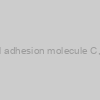 Mouse Junctional adhesion molecule C, Jam3 ELISA KIT |
|
ELI-08044m |
Lifescience Market |
96 Tests |
EUR 1038 |
 ELISA Kit) Mouse Junctional Adhesion Molecule 3 (JAM3) ELISA Kit |
|
EK20176 |
SAB |
96Т |
EUR 768 |
|
|
 ELISA kit) Mouse Junctional adhesion molecule A(F11R) ELISA kit |
|
CSB-EL007917MO-24T |
Cusabio |
1 plate of 24 wells |
EUR 198 |
|
|
|
Description: Quantitative sandwich ELISA kit for measuring Mouse Junctional adhesion molecule A (F11R) in samples from serum, plasma, cell culture supernates, tissue homogenates. A new trial version of the kit, which allows you to test the kit in your application at a reasonable price. |
 ELISA kit) Mouse Junctional adhesion molecule A(F11R) ELISA kit |
|
1-CSB-EL007917MO |
Cusabio |
-
Ask for price
-
Ask for price
-
Ask for price
|
- 1 plate of 96 wells
- 10 plates of 96 wells each
- 5 plates of 96 wells each
|
|
|
|
Description: Quantitative sandwich ELISA kit for measuring Mouse Junctional adhesion molecule A(F11R) in samples from serum, plasma, cell culture supernates, tissue homogenates. Now available in a cost efficient pack of 5 plates of 96 wells each, conveniently packed along with the other reagents in 5 separate kits. |
 ELISA Kit) Mouse Junctional Adhesion Molecule 2 (JAM2) ELISA Kit |
|
abx528938-96tests |
Abbexa |
96 tests |
EUR 687.5 |
 ELISA Kit) Mouse Junctional Adhesion Molecule 3 (JAM3) ELISA Kit |
|
abx528940-96tests |
Abbexa |
96 tests |
EUR 687.5 |
 Human Junctional Adhesion Molecule 2/JAM-B Antibody |
|
33424-05111 |
AssayPro |
150 ug |
EUR 215 |
 Protein) Mouse Junctional Adhesion Molecule 1 / JAM1 (F11R) Protein |
|
abx691043-100g |
Abbexa |
100 µg |
EUR 837.5 |
 Protein) Mouse Junctional Adhesion Molecule 1 / JAM1 (F11R) Protein |
|
abx691043-1mg |
Abbexa |
1 mg |
Ask for price |
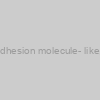 Mouse Junctional adhesion molecule- like, Amica1 ELISA KIT |
|
ELI-31201m |
Lifescience Market |
96 Tests |
EUR 1038 |
 Mouse Junctional adhesion molecule C, JAM3 GENLISA ELISA |
|
KLM2195 |
Krishgen |
1 x 96 wells |
EUR 341 |
 ELISA Kit) Mouse Junctional adhesion molecule-like (JAML) ELISA Kit |
|
abx528943-96tests |
Abbexa |
96 tests |
EUR 687.5 |
 Elisa Kit) Human Junctional adhesion molecule B(JAM2) Elisa Kit |
|
EK712797 |
AFG Bioscience LLC |
96 Wells |
EUR 0.29 |
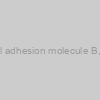 Human Junctional adhesion molecule B, JAM2 ELISA KIT |
|
ELI-12652h |
Lifescience Market |
96 Tests |
EUR 988.8 |
 Antibody) Junctional Adhesion Molecule 2 (JAM2) Antibody |
|
20-abx327593 |
Abbexa |
-
Ask for price
-
Ask for price
|
|
|
|
 Antibody) Junctional Adhesion Molecule C (JAMC) Antibody |
|
abx432880-200ul |
Abbexa |
200 ul |
EUR 343.2 |
|
|
 Antibody) Junctional Adhesion Molecule C (JAMC) Antibody |
|
abx415244-025mg |
Abbexa |
0.25 mg |
EUR 678 |
|
|
 Antibody) Junctional Adhesion Molecule C (JAMC) Antibody |
|
abx415247-025mg |
Abbexa |
0.25 mg |
EUR 678 |
|
|
 Antibody) Junctional Adhesion Molecule C (JAMC) Antibody |
|
abx415250-25ug |
Abbexa |
25 ug |
EUR 326.4 |
|
|
 Antibody) Junctional Adhesion Molecule C (JAMC) Antibody |
|
abx415251-1mg |
Abbexa |
1 mg |
EUR 994.8 |
|
|
 Antibody) Junctional Adhesion Molecule 2 (JAM2) Antibody |
|
abx430155-200ul |
Abbexa |
200 ul |
EUR 460.8 |
|
|
 Antibody) Junctional Adhesion Molecule 2 (JAM2) Antibody |
|
abx430245-200ul |
Abbexa |
200 ul |
EUR 343.2 |
|
|
 Antibody) Junctional Adhesion Molecule 1 (JAM1) Antibody |
|
20-abx270085 |
Abbexa |
-
Ask for price
-
Ask for price
-
Ask for price
-
Ask for price
-
Ask for price
|
- 100 tests
- 200 tests
- 25 tests
- 500 tests
- 50 tests
|
|
|
 Antibody) Junctional Adhesion Molecule A (F11R) Antibody |
|
20-abx333868 |
Abbexa |
-
Ask for price
-
Ask for price
-
Ask for price
-
Ask for price
-
Ask for price
|
- 100 ug
- 1 mg
- 200 ug
- 20 ug
- 50 ug
|
|
|
 Antibody) Junctional Adhesion Molecule A (F11R) Antibody |
|
20-abx330142 |
Abbexa |
-
Ask for price
-
Ask for price
|
|
|
|
 Antibody) Junctional Adhesion Molecule 3 (JAM3) Antibody |
|
20-abx338850 |
Abbexa |
-
Ask for price
-
Ask for price
-
Ask for price
-
Ask for price
-
Ask for price
|
- 100 ug
- 1 mg
- 200 ug
- 20 ug
- 50 ug
|
|
|
 Antibody) Junctional Adhesion Molecule 3 (JAM3) Antibody |
|
20-abx129330 |
Abbexa |
-
Ask for price
-
Ask for price
-
Ask for price
-
Ask for price
-
Ask for price
|
- 100 ug
- 10 ug
- 1 mg
- 200 ug
- 50 ug
|
|
|
 Antibody) Junctional Adhesion Molecule A (F11R) Antibody |
|
20-abx211231 |
Abbexa |
-
Ask for price
-
Ask for price
|
|
|
|
 Antibody) Junctional Adhesion Molecule A (F11R) Antibody |
|
20-abx211232 |
Abbexa |
-
Ask for price
-
Ask for price
|
|
|
|
 Antibody) Junctional Adhesion Molecule 1 (JAM1) Antibody |
|
20-abx173215 |
Abbexa |
-
Ask for price
-
Ask for price
|
|
|
|
 Antibody) Junctional Adhesion Molecule 2 (JAM2) Antibody |
|
20-abx173216 |
Abbexa |
-
Ask for price
-
Ask for price
|
|
|
|
 Antibody) Junctional Adhesion Molecule 3 (JAM3) Antibody |
|
20-abx173217 |
Abbexa |
-
Ask for price
-
Ask for price
|
|
|
|
 Antibody) Junctional Adhesion Molecule 3 (JAM3) Antibody |
|
20-abx177235 |
Abbexa |
-
Ask for price
-
Ask for price
|
|
|
|
 Antibody) Junctional Adhesion Molecule 2 (JAM2) Antibody |
|
20-abx128023 |
Abbexa |
-
Ask for price
-
Ask for price
-
Ask for price
-
Ask for price
-
Ask for price
|
- 100 ug
- 10 ug
- 1 mg
- 200 ug
- 50 ug
|
|
|
 Antibody) Junctional Adhesion Molecule 1 (JAM1) Antibody |
|
20-abx128588 |
Abbexa |
-
Ask for price
-
Ask for price
-
Ask for price
-
Ask for price
-
Ask for price
|
- 100 ug
- 10 ug
- 1 mg
- 200 ug
- 50 ug
|
|
|
 Antibody) Junctional Adhesion Molecule 2 (JAM2) Antibody |
|
abx234435-100ug |
Abbexa |
100 ug |
EUR 610.8 |
|
|
 Antibody) Junctional Adhesion Molecule 3 (JAM3) Antibody |
|
20-abx216346 |
Abbexa |
-
Ask for price
-
Ask for price
|
|
|
|
 Antibody) Junctional Adhesion Molecule 2 (JAM2) Antibody |
|
20-abx113297 |
Abbexa |
-
Ask for price
-
Ask for price
|
|
|
|
 Antibody) Junctional Adhesion Molecule 2 (JAM2) Antibody |
|
20-abx148748 |
Abbexa |
-
Ask for price
-
Ask for price
|
|
|
|
 Antibody) Junctional Adhesion Molecule A (F11R) Antibody |
|
20-abx149036 |
Abbexa |
-
Ask for price
-
Ask for price
|
|
|
|
 Antibody) Junctional Adhesion Molecule 2 (JAM2) Antibody |
|
20-abx135898 |
Abbexa |
-
Ask for price
-
Ask for price
-
Ask for price
-
Ask for price
|
- 100 ul
- 200 ul
- 20 ul
- 50 ul
|
|
|
 Antibody) Junctional Adhesion Molecule 2 (JAM2) Antibody |
|
abx145733-100ug |
Abbexa |
100 ug |
EUR 469.2 |
|
|
 Antibody) Junctional Adhesion Molecule 2 (JAM2) Antibody |
|
20-abx109950 |
Abbexa |
-
Ask for price
-
Ask for price
-
Ask for price
-
Ask for price
-
Ask for price
|
- 100 ug
- 1 mg
- 200 ug
- 20 ug
- 50 ug
|
|
|
 Antibody) Junctional Adhesion Molecule A (F11R) Antibody |
|
abx117076-100ug |
Abbexa |
100 ug |
EUR 560.4 |
|
|
 Antibody) Junctional Adhesion Molecule A (F11R) Antibody |
|
20-abx001153 |
Abbexa |
-
Ask for price
-
Ask for price
-
Ask for price
-
Ask for price
|
- 100 ul
- 200 ul
- 20 ul
- 50 ul
|
|
|
 Antibody) Junctional Adhesion Molecule 2 (JAM2) Antibody |
|
abx027880-400ul |
Abbexa |
400 ul |
EUR 627.6 |
|
|
 Antibody) Junctional Adhesion Molecule 2 (JAM2) Antibody |
|
abx027880-80l |
Abbexa |
80 µl |
EUR 343.2 |
|
|
 Antibody) Junctional Adhesion Molecule 2 (JAM2) Antibody |
|
abx128023-100l |
Abbexa |
100 µl |
EUR 262.5 |
 Antibody) Junctional Adhesion Molecule 2 (JAM2) Antibody |
|
abx128023-1ml |
Abbexa |
1 ml |
EUR 712.5 |
 Antibody) Junctional Adhesion Molecule 2 (JAM2) Antibody |
|
abx128023-200l |
Abbexa |
200 µl |
EUR 325 |
 Antibody) Junctional Adhesion Molecule 3 (JAM3) Antibody |
|
abx129330-100l |
Abbexa |
100 µl |
EUR 287.5 |
 Antibody) Junctional Adhesion Molecule 3 (JAM3) Antibody |
|
abx129330-1ml |
Abbexa |
1 ml |
EUR 850 |
 Antibody) Junctional Adhesion Molecule 3 (JAM3) Antibody |
|
abx129330-200l |
Abbexa |
200 µl |
EUR 375 |
 Antibody) Junctional Adhesion Molecule 2 (JAM2) Antibody |
|
abx113297-100l |
Abbexa |
100 µl |
EUR 612.5 |
 Antibody) Junctional Adhesion Molecule 2 (JAM2) Antibody |
|
abx109950-100l |
Abbexa |
100 µl |
EUR 162.5 |
 Antibody) Junctional Adhesion Molecule 2 (JAM2) Antibody |
|
abx145733-1096tests |
Abbexa |
10 × 96 tests |
Ask for price |
 Antibody) Junctional Adhesion Molecule 2 (JAM2) Antibody |
|
abx145733-596tests |
Abbexa |
5 × 96 tests |
Ask for price |
 Antibody) Junctional Adhesion Molecule 2 (JAM2) Antibody |
|
abx145733-96tests |
Abbexa |
96 tests |
EUR 337.5 |
 Antibody) Junctional Adhesion Molecule 2 (JAM2) Antibody |
|
abx135898-100tests |
Abbexa |
100 tests |
EUR 175 |
 Antibody) Junctional Adhesion Molecule 2 (JAM2) Antibody |
|
abx137631-01mg |
Abbexa |
0.1 mg |
EUR 225 |
 Antibody) Junctional Adhesion Molecule 2 (JAM2) Antibody |
|
abx234435-100g |
Abbexa |
100 µg |
EUR 350 |
 Antibody) Junctional Adhesion Molecule 2 (JAM2) Antibody |
|
abx027880-400l |
Abbexa |
400 µl |
EUR 518.75 |
 Antibody) Junctional Adhesion Molecule 2 (JAM2) Antibody |
|
abx173216-100l |
Abbexa |
100 µl |
EUR 750 |
 Antibody) Junctional Adhesion Molecule 2 (JAM2) Antibody |
|
abx173216-1ml |
Abbexa |
1 ml |
Ask for price |
 Antibody) Junctional Adhesion Molecule 2 (JAM2) Antibody |
|
abx173216-200l |
Abbexa |
200 µl |
Ask for price |
 Antibody) Junctional Adhesion Molecule 3 (JAM3) Antibody |
|
abx173217-1ml |
Abbexa |
1 ml |
EUR 875 |
 Antibody) Junctional Adhesion Molecule 3 (JAM3) Antibody |
|
abx177235-1096tests |
Abbexa |
10 × 96 tests |
Ask for price |
 Antibody) Junctional Adhesion Molecule 3 (JAM3) Antibody |
|
abx177235-596tests |
Abbexa |
5 × 96 tests |
Ask for price |
 Antibody) Junctional Adhesion Molecule 3 (JAM3) Antibody |
|
abx177235-96tests |
Abbexa |
96 tests |
EUR 825 |
 Antibody) Junctional Adhesion Molecule 3 (JAM3) Antibody |
|
abx375435-96tests |
Abbexa |
96 tests |
EUR 337.5 |
 Antibody) Junctional Adhesion Molecule 2 (JAM2) Antibody |
|
abx327593-100g |
Abbexa |
100 µg |
EUR 250 |
 Antibody) Junctional Adhesion Molecule 2 (JAM2) Antibody |
|
abx327593-50g |
Abbexa |
50 µg |
EUR 187.5 |
 Antibody) Junctional Adhesion Molecule 3 (JAM3) Antibody |
|
abx338850-100l |
Abbexa |
100 µl |
EUR 250 |
 Antibody) Junctional Adhesion Molecule 3 (JAM3) Antibody |
|
abx338850-50l |
Abbexa |
50 µl |
EUR 162.5 |
 Antibody) Junctional Adhesion Molecule C (JAMC) Antibody |
|
abx432880-100g |
Abbexa |
100 µg |
EUR 250 |
 Antibody) Junctional Adhesion Molecule C (JAMC) Antibody |
|
abx415244-200l |
Abbexa |
200 µl |
EUR 462.5 |
 Antibody) Junctional Adhesion Molecule C (JAMC) Antibody |
|
abx415247-200l |
Abbexa |
200 µl |
EUR 462.5 |
 Antibody) Junctional Adhesion Molecule C (JAMC) Antibody |
|
abx415250-200l |
Abbexa |
200 µl |
EUR 175 |
 Antibody) Junctional Adhesion Molecule C (JAMC) Antibody |
|
abx415251-200l |
Abbexa |
200 µl |
EUR 737.5 |
 Antibody) Junctional Adhesion Molecule 2 (JAM2) Antibody |
|
abx430155-200l |
Abbexa |
200 µl |
EUR 387.5 |
 Antibody) Junctional Adhesion Molecule 2 (JAM2) Antibody |
|
abx430245-200l |
Abbexa |
200 µl |
EUR 250 |
 Antibody) Junctional Adhesion Molecule A (CD321) Antibody |
|
abx414071-025mg |
Abbexa |
0.25 mg |
EUR 678 |
|
|
 Antibody) Junctional Adhesion Molecule A (CD321) Antibody |
|
abx414073-01mg |
Abbexa |
0.1 mg |
EUR 526.8 |
|
|
 Antibody) Junctional Adhesion Molecule A (CD321) Antibody |
|
20-abx133777 |
Abbexa |
-
Ask for price
-
Ask for price
-
Ask for price
|
|
|
|
 ELISA Kit) Mouse Junctional Adhesion Molecule 1 / JAM1 (F11R) ELISA Kit |
|
abx389235-96tests |
Abbexa |
96 tests |
EUR 1093.2 |
|
|
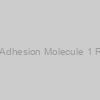 Junctional Adhesion Molecule 1 Rabbit mAb |
|
E2R24783 |
EnoGene |
100ul |
EUR 255 |
|
Description: Available in various conjugation types. |
 Junctional Adhesion Molecule 1 Rabbit mAb |
|
E2R26929 |
EnoGene |
100ul |
EUR 255 |
|
Description: Available in various conjugation types. |
 Junctional Adhesion Molecule 1 Rabbit mAb |
|
52378 |
SAB |
100ul |
EUR 499 |
 Polyclonal Antibody (Mouse)) Junctional Adhesion Molecule 3 (JAM3) Polyclonal Antibody (Mouse) |
|
4-PAL637Mu01 |
Cloud-Clone |
-
Ask for price
-
Ask for price
-
Ask for price
-
Ask for price
-
Ask for price
|
- 100ul
- 10ml
- 1ml
- 200ul
- 20ul
|
|
|
|
Description: A Rabbit polyclonal antibody against Mouse Junctional Adhesion Molecule 3 (JAM3) |
 Antibody) Anti-Mouse Junctional adhesion molecule A (JAM-A) Antibody |
|
103-M257 |
ReliaTech |
100 µg |
EUR 399 |
|
Description: Members of the junctional adhesion molecule (JAM) family are type I transmembrane glycoproteins of the immunoglobulin (Ig) superfamily that are localized in the tight junctions between endothelial or epithelial cells and appear to be involved in leukocyte transmigration. JAM-A, also known as platelet adhesion molecule 1 (PAM-1) and platelet F11 receptor, contains two V-type Ig-like domains, forms homodimers, and interacts with LFA-1. JAM-B (vasculoendothelial or VE-JAM) and JAM-C each contain two Ig domains (one V-type and one C2-type), a cytoplasmic PDZ-binding motif and a PKC phosphorylation site. JAM-C interacts with MAC-1 and facilitates JAM-B interaction with integrin alpha 4 beta 1. |
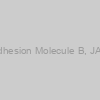 Human Junctional Adhesion Molecule B, JAM2 GENLISA ELISA |
|
KBH5529 |
Krishgen |
1 x 96 wells |
EUR 286 |
 Protein) Junctional Adhesion Molecule 3 (JAM3) Protein |
|
20-abx263308 |
Abbexa |
-
Ask for price
-
Ask for price
-
Ask for price
|
|
|
|
 Protein) Junctional Adhesion Molecule A (F11R) Protein |
|
20-abx260895 |
Abbexa |
-
Ask for price
-
Ask for price
-
Ask for price
|
|
|
|
 Protein) Junctional Adhesion Molecule 2 (JAM2) Protein |
|
20-abx261003 |
Abbexa |
-
Ask for price
-
Ask for price
-
Ask for price
|
|
|
|
 Protein) Junctional Adhesion Molecule 3 (JAM3) Protein |
|
abx263308-10mg |
Abbexa |
10 mg |
EUR 325 |
 Protein) Junctional Adhesion Molecule 3 (JAM3) Protein |
|
abx263308-25mg |
Abbexa |
25 mg |
EUR 1600 |
 Protein) Junctional Adhesion Molecule 3 (JAM3) Protein |
|
abx263308-5mg |
Abbexa |
5 mg |
EUR 225 |
Twelve screws (3×15 mm) had been evaluated, one screw per every composition was positioned bi-cortically within the mandible of every animal with a titanium (2×12 mm) screw serving as an inner constructive management. At 6 and 24 weeks histomorphological evaluation was carried out, at 6 weeks as solid, WE43, yielded a better degradation charge, elevated bone transforming and osteolysis in comparison with the WE43-T5 alloy; nonetheless, at 24 weeks WE43-T5 confirmed greater degradation charge and elevated bone transforming than as-cast. In vitro assay of cell development, adhesion and differentiation was additionally carried out to research doable mechanisms underlying the habits expressed from the alloys in vivo.

